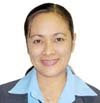Wednesday, October 29, 2008
Badian Island Resort and Spa
NATURAL AND SURPRISING
The natural beauty of the island - with its picturesque location just off the Southwest Coast of Cebu - warmly embraces its visitors on their arrival. Here, the resort’s lush palms speckle the private sandy beach that slowly slips into the azure lagoon. A white tongue of sand whisks you out into an inspiring world between heaven and ocean. Fishing outriggers slip silently past the enchanting silhouette of the Mountains of Cebu, an atmosphere worth more than ten thousand words. And the evenings ...CORDIAL AND COMFORTING
Our greatest asset is our personnel, known for their unrivalled warmth and hospitality - we know what makes you feel comfortable.HOW TO REACH BADIAN ISLAND CEBU?
SO FAR YET SO NEAR.
Badian Island Resort & Spa at the Southwest Coast of Cebu is just abt. a 2,5 hours' car drive from Cebu International Airport, where our guests are warmly welcomed by our staff. Nonstop flights from Hongkong, Singapore, Shanghai, Bangkok, Kuala Lumpur, Tokyo, Seoul, Pusan, Taipeh, and Doha arrive at Cebu International Airport daily. Domestic flights are only an hour from Manila per Airbus or Boeing 737/747.
YOU WANT TO BE PICKED UP AT CEBU INTERNATIONAL AIRPORT.
Just let us know your flight details; our driver will be waiting at the airport and bring you to Badian pier by car. From there it's only five minutes to the island by boat.
On request we arrange for you a Helicopter Service directly from Cebu Airport, which will bring you right into the heart of our resort in less than 30 minutes.
THE BEACHES....
At Badian Island you will find a white sandy private beach directly at the resort.Additionally, we offer a 5 minutes‘ free boat ride to our romantic private beach at Coral Garden for swimming, or exploring the fascinating underwater world snorkelling at our "house reef".
SUN AND SPORTS
Enjoy the great variety of different sports - In brief: Hobby Cat, Jet Blast, Aqua Cycle, Banana Boat.
FREE Sports: Windsurfing, Paddleboats, Tabletennis, Billiard, Darts, Badminton, Volleyball, Parlour Games.
Or just relax at the pool or our private beach, enjoy the unusual sunsets or chat with other guests and friends.
Thursday, October 23, 2008
Cebu

The Philippines
The Philippines extend 1,152 mi (1,855 km) from north to south, between Taiwan and Borneo, and 688 mi (1,108 km) from east to west, and are bounded by the Philippine Sea on the east, the Celebes Sea on the south, and the South China Sea on the west. They comprise three natural divisions—the northern, which includes Luzon and attendant islands; the central, occupied by the Visayan Islands and Palawan and Mindoro; and the southern, encompassing Mindanao and the Sulu Archipelago. In addition to Manila, other important centers are Quezon City , also on Luzon; Cebu, on Cebu Island; Iloilo , on Panay; Davao and Zamboanga , on Mindanao; and Jolo, on Jolo Island in the Sulu Archipelago.
The Philippines are chiefly of volcanic origin. Most of the larger islands are traversed by mountain ranges, with Mt. Apo (9,690 ft/2,954 m), on Mindanao, the highest peak. Narrow coastal plains, wide valleys, volcanoes, dense forests, and mineral and hot springs further characterize the larger islands. Earthquakes are common. Of the navigable rivers, Cagayan, on Luzon, is the largest; there are also large lakes on Luzon and Mindanao.
The Philippines are entirely within the tropical zone. Manila, with a mean daily temperature of 79.5°F (26. 4°C), is typical of the climate of the lowland areas—hot and humid. The highlands, however, have a bracing climate; e.g., Baguio , the summer capital, on Luzon, has a mean annual temperature of 64°F (17.8°C). The islands are subject to typhoons, whose torrential rains can cause devastating floods; 5,000 people died on Leyte in 1991 from such flooding, and several storms in 2004 and 2006 caused deadly flooding and great destruction.
